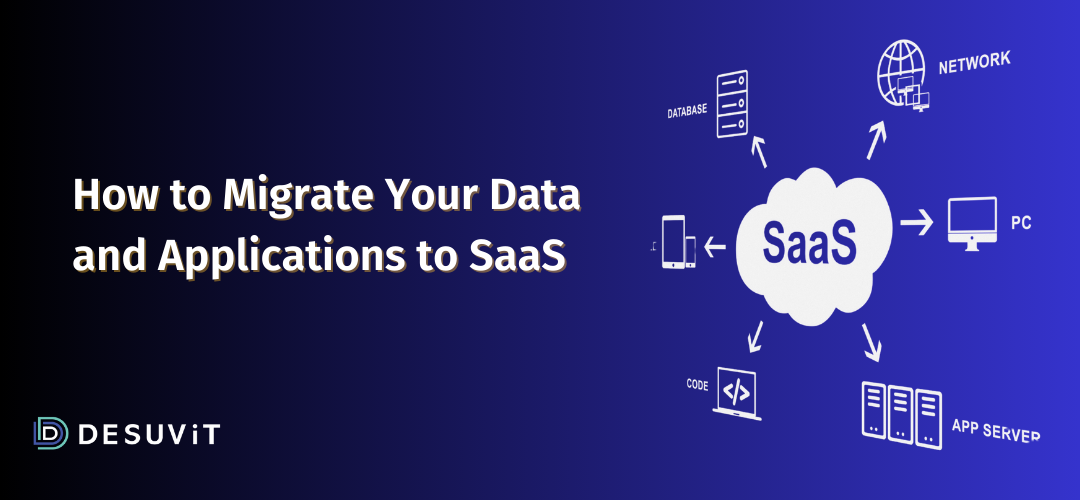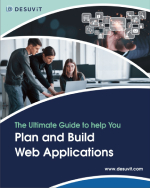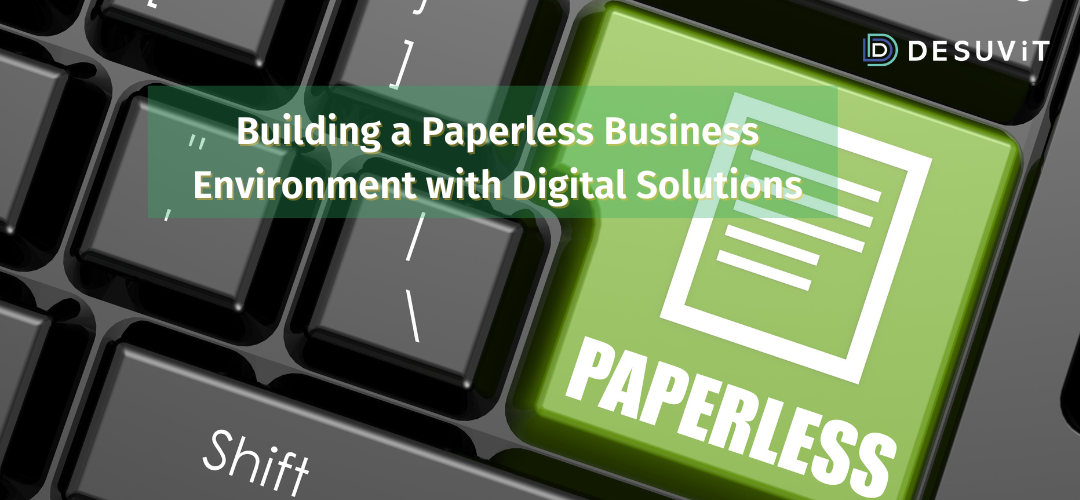How to Migrate Your Data and Applications to SaaS?
The decision to migrate your data and applications to SaaS signifies an essential shift in your organization’s operations. This transformative step unlocks a world of possibilities, streamlining processes, enhancing collaboration, and optimizing resource utilization. However, it also requires a careful approach to avoid disrupting your operations.
Assessing your current environment
Assessing your current environment is the first step to migrating your data and applications to SaaS. This phase comprehensively reviews your existing IT infrastructure, software applications, and data repositories. By closely examining what you currently have in place, you can identify any pain points, limitations, or inefficiencies hindering your business operations.
This assessment lets you clearly understand your organization’s readiness for SaaS adoption. This step helps you know what you have and what you’ll need to change or improve. This initial evaluation sets the stage for making informed decisions as you move forward in the migration process! And in turn, it facilitates a smoother and more successful transition.
Setting clear objectives and goals
Setting clear objectives and goals is pivotal when migrating your data and applications to a SaaS model. After all, having a clear plan ensures you stay on track and reach your desired endpoint. By defining your migration objectives, you also provide your team with a focused direction. This clarity helps them make well-informed decisions throughout the migration process.
Furthermore, this can help you find ways to reduce your costs and increase your ROI. In addition, establishing measurable success criteria allows you to track progress and gauge the effectiveness of your migration efforts. Aligning these objectives with your broader business strategy ensures your migration aligns with your organization’s long-term goals!
Choosing the right SaaS providers
Choosing the right SaaS providers is a critical decision in your migration journey. The first step is researching available SaaS options and assessing factors like features, pricing, and service levels to find a provider that aligns with your specific requirements.
At the same time, Movers Development, with plenty of experience with marketing and using different platforms, recommends that you stick to one provider once you’ve decided and try to work closer with them. This strategic approach fosters a deeper understanding of their platform, enabling you to reach solutions and optimize your approach more readily. Consistency can also lead to better integration and support, making your migration smoother and more efficient!
Data migration strategies
Data migration strategies are essential for a successful transition to a SaaS environment. The first step is to understand the importance of data migration and to acknowledge that your data is the lifeblood of your operations.
Then, depending on your data’s complexity, consider different migration methods, either manual or automated. Data mapping and transformation are critical, ensuring your data fits seamlessly into the new system! The more customers and data you have, the more critical it is that everything is transferred over correctly. Otherwise, your customers might need to receive the level of service and customization they’re used to!
Application migration strategies
Application migration strategies are the linchpin of a successful transition to a SaaS environment. Start by identifying which applications suit migration, considering factors like compatibility and functionality. Assess customization and integration needs to determine whether re-hosting, re-platforming, or re-factoring is the best route.
Each option has its merits, depending on your specific situation. So, choosing the right application migration strategy ensures your software functions seamlessly during the transition. That minimizes disruptions, maximizes cost-effectiveness, and sets the stage for a smooth transition.
Security and compliance considerations
Security and compliance considerations are paramount when migrating to a SaaS environment. After all, ensuring data security during migration is essential to protect sensitive information from falling into the wrong hands. Addressing compliance requirements like GDPR or HIPAA helps avoid legal pitfalls.
Alongside these measures, implementing access controls and encryption fortifies your defenses, making it challenging for unauthorized entities to breach your systems. At the same time, cyber security improvements should be at the forefront of your strategy, continually enhancing your protection measures to adapt to evolving threats.
Managing change and training
Managing change and training are key to successfully transitioning to a SaaS environment. Conducting user training and support ensures that everyone is equipped with the knowledge and skills needed to excel in the new environment.
Effective communication about organizational changes is also required. This fosters understanding and reduces resistance to change. People are at the heart of any transformation, and a well-managed transition leads to smoother operations, higher productivity, and a more engaged workforce!
Testing and quality assurance
Testing and quality assurance are pivotal elements when you work to migrate your data and applications to SaaS, ensuring that everything runs smoothly. Thorough testing helps identify and rectify potential glitches or issues that could disrupt operations.
Meanwhile, creating test scenarios and scripts ensures that every aspect of your new SaaS setup is scrutinized. By prioritizing testing, you can confidently ensure your migration will proceed seamlessly. This step also involves identifying and addressing anomalies before they affect your business processes. Therefore, think of this not as a waste of time but as clearing any obstacles and problems ahead of time. Ultimately, the goal is to implement digital solutions with proven results, ensuring that your SaaS transition is efficient and trouble-free.
Data backup and recovery
Data backup and recovery are essential to migrating your data and applications to SaaS. Implementing backup strategies ensures that your data remains safe and accessible even in the face of unexpected events.
Creating a robust disaster recovery plan means having a contingency for emergencies and safeguarding your business from potential data loss or disruptions. That is your security blanket, ensuring business continuity in a crisis!
The value of a good roadmap
The decision to migrate your data and applications to SaaS is a strategic move that can revolutionize your organization’s efficiency and competitiveness. Following a well-planned roadmap will pave the way for a seamless transition. This way, you can embrace SaaS’s opportunities and stay adaptable to future advancements!
Desuvit is a Norway-born software development company delivering Custom Software Development, Mobile Apps, and Web Applications Development for various verticals and business domains. We offer end-to-end solutions for companies with no software or IT division, Startups, and companies that need to scale their software development efforts but lack the expertise required. We help our clients in growing their businesses so we can grow with them. Some of the technologies we work with: .Net, Azure, Microservices, Azure functions(Serverless computing), React Native, Flutter, React JS, TypeScript, Angular, NServiceBus, Azure Service Bus, Azure Queues, SQL Service, MySQL, Cosmos DB, etc.
Enjoyed this article? Subscribe for more valuable and great content !
By subscribing, you agree with our privacy policy and our terms of service.






